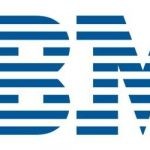Guest Blog: Beating quantum winter: opportunities further up the quantum value chain

(FactBasedInsight:Guest Blog) The development of large scale quantum computers is expected to be a decade long journey. Some predict a quantum winter before early investors see returns. This need not be the case for those willing to look more widely.
Quantum computing is the poster child of the emerging quantum technology sector. However, the same underlying technologies that are lining up to form the basis of new computing platforms also have a wide range of other potential applications.
Opportunities in quantum safe cryptography and quantum simulators can expect to generate returns over a medium term horizon. In this article we look at where additional short term opportunities may lie in quantum sensing and imaging.
Teams developing quantum computing hardware must go to extreme lengths to shield their prototype qubits from the external environment. Unsurprisingly, such sensitive systems also tend to make great sensors. Commercial devices of this sort will likely be ready long in advance of 6-million qubit fault tolerant computers.
Quantum enhanced sensing and imaging devices promise to have a wide impact(1,15,16,31):
High sensitivity 3D imaging and inertial sensors to assist autonomous vehicles, undersea, aerospace and robotic applications
Gravity sensors to drive underground survey applications for resource exploration, civil engineering and infrastructure monitoring
Magnetic field sensors for medical scanning and diagnostics
Compact atomic clocks to remove our vulnerability to satellite disruption
Quantum radar able to challenge stealth technology
… and many others
Much activity is already underway as part of an increasingly vibrant quantum eco-system. This has implications for investors, and enlightened governments.
Investor strategy and the quantum value chain
Fact Based Insight believes that quantum sensing and imaging has the potential to generate returns on a relatively short term basis. New novel devices are at an advanced demonstrator and prototype stage, startups are forming. Sometimes these devices offer radical improvements in sensitivity compared to their conventional counterparts. Equally importantly they often offer good sensitivity combined with a more compact form factor and a lower cost of deployment.
How should investors evaluate these opportunities? End users will not care about the technology per se, but will focus on the benefits they receive in terms of cost, time and increased business functionality. Investors naturally care that a strong value proposition exists, and that the startup leadership team can articulate it clearly.
However astute investors should also look more deeply at the specific technology they are backing. Is it truly disruptive or simply incremental in the advantage it brings? Is it a niche opportunity, or is it part of a roadmap to wider quantum opportunities? Might it be superseded by a further generation of quantum tech?
To answer these questions, Fact Based Insight believes it is vital to understand not just where the technology sits in the conventional value chain, but also where it specifically sits in the quantum value chain. Some valid early opportunities will be in enabling, rather than truly quantum technologies, others will already be leveraging one or more unique quantum properties: single quanta, superposition or entanglement. Investors need to understand the technology skills base they are buying into.
Before we get to the quantum specifics, we first need to review the key areas of conventional technology that are enabling this revolution.
Enabling technologies
The key principals of quantum mechanics have been understood since the 1930s. What is different now is that progress in a range of areas is allowing us to take direct control of these unique phenomena on a routine engineered basis inside and outside of the lab.
Micro/nanofabrication
Over the last 30 years our insatiable desire for faster microprocessors and more latterly MEMS for our consumer electronics, has driven high levels of investment in our ability to manufacture at the micro and nano scale. A profusion of techniques and materials are now available and we are able to engineer devices right down to the scale where quantum effects start to dominate.
Superconducting, trapped ion and photonic qubit technologies rely on our ability to fabricate novel circuit components at the micro scale. Silicon spin and topological qubit technologies require nano-scale component features. Even developing conventional control electronics to operate at low cryogenic temperatures requires cutting edge CMOS process techniques. This same technology also provides the base for us to fabricate miniaturised devices for delicate sensing and imaging applications.
Groups are using a wide range of advanced materials and techniques (e.g. III-V semiconductors to electron beam lithography and single ion implantation). However, many groups are also keen to emphasise the basic CMOS-compatibility of the processes they employ. Though the prototyping costs of such systems are high, this is a well proven manufacturing sector and, as we have seen with modern consumer electronics, once we reach mass production the cost advantages can be compelling (32).
Photonics
Photonics is the applied science of light. Academic interest in fundamental science has driven remarkable progress. In addition, laser light has literally been the backbone of the digital revolution. Commercial investment in optical data communications has driven the development of many important components, from high performance laser diodes to optical switches.
CMOS process techniques have also been adapted to allow the creation of complex integrated optical circuits in silicon. The new field of silicon photonics has already attracted significant investment for conventional optical processing applications and is set to be a versatile tool for future developments. Strategic co-operation between IC foundries and photonic companies is growing, such as TSMC and Luxtera, Globalfoundries and Ayar Labs.
Photonic qubits are themselves one contender for the development of full-scale ‘measurement based’ quantum computers. They are also particularly well suited as quantum simulators for certain applications. Photonics will likely be our go-to technology for linking quantum devices over any significant distance and it is at the heart of quantum cryptography. Its no surprise that it is a key technology for sensing and imaging (31).
Computational Science
The other key ingredient unlocking the potential of quantum information processing is mathematical advance in computational science. Quantum computers would offer no benefit over conventional computers without newly created quantum algorithms; their potential would be severely limited without quantum error correction; their practical operation impossible without sophisticated control and optimisation.
It is not surprising that many of the groups working on quantum hardware have strong links to colleagues with deep mathematical skills. It’s natural that cutting edge techniques are often being applied to maximise the potential of quantum sensors and imaging solutions. Examples include computational imaging, Bayesian inference, machine learning and others (21,22).
So what are the unique properties of the quantum world that these technologies unlock? How can they be harnessed in revolutionary sensing and imaging applications?
Single Quanta – detecting the smallest signals
Quantum mechanics gets its name from Max Planck’s original insight – even at the smallest scales, energy is only radiated or absorbed in discrete ‘quanta’. The photon, a single particle of light, is the archetypal quanta. Being able to work directly with individual photons, and via their interactions with individual atoms and ions is a key new technological capability.
The combination of photonics science and nanofabrication know-how is already driving the development of key components: high performance single photon detectors (e.g. SPAD, SNSPD), sources for single photons and photon pairs (e.g. quantum dots, SPDC). These are increasingly being assembled into demonstrators and prototypes for potential applications.
Imaging with single photons
An image taken with a conventional camera captures perhaps a trillion photons. A key technique in quantum imaging is the accurate detection of individual photons to maximise sensitivity. This combines with other advanced imaging techniques to push back the frontier of potential opportunities.
Many groups around the world are investigating this area, including the MIT Media Lab, AQUA and others. A leading example is QuantIC, part of the UKNQT, who are leading the development of a family of advanced cameras that span quantum, enabling and complementary technologies. These include QuantICAM, IndiPix, GasSight, TeraCAM and others.
Strengths
Weaknesses
Opportunities
Threats
Ultra high sensitivity and increased video frame rates in challenging environments
High resolution timing of photon arrival (e.g. to support 3D imaging)
CMOS compatible SPAD arrays promise low manufacturing cost and room temperature operation
Ge-on-Si SPAD technology extends sensitivity into the near infrared
Combines well with other advanced imaging techniques
– Time-of-flight – target is illuminated with a pulsed laser to allow reconstruction of a 3D image
– Single pixel cameras – structured illumination can remove the need for a costly multi-pixel camera
– Ghost imaging – different wavelengths can be used to scan the subject vs form the image (e.g. to optimise performance/cost)
– Computational image enhancement
– Machine learning
Labelling with quantum dots
The detection of stimulated fluorescence is an established analytic and imaging technique. This is especially useful at microscopic scales in the Life Sciences – if I can label my target with a suitable fluorescent marker, I can detect its presence by probing it with a suitably tuned laser. This technique has traditionally used organic fluorescent dyes. These now stand to be augmented by the use of semiconductor quantum dots and carbon dots as a new generation of markers. These nanoparticles can be engineered to control and optimise their light emitting properties.
Many medical research and nanotechnology groups are pursuing these opportunities (31). FluoretIQ is an example of a startup bringing a streamlined version of this technology to applications outside of the lab.
Strengths
Weaknesses
Opportunities
Threats
Brighter emissions and greater stability than organic dyes
Favourable spectral properties allow multiple targets to be probed simultaneously
Superposition – sensitive interference
The property of quantum superposition allows us to place an individual atom, ion or photon into two different states (e.g. places or orientations) at the same time. The wavelike aspect of quantum mechanics means that these states can interfere with each other with measurable consequences (like two ripples crossing on the surface of a pond). Fine differences in the conditions experienced by the states show up in the interference pattern observed.
Such interferometry is a well established and extremely sensitive technique in scientific metrology, and has been pioneered by national centres such as NIST and NPL over many years.. What is different now is that our mastery of the required microfabrication and control techniques is allowing us to design a new generation of these sensors in small and relatively low cost packages for use outside of the lab.
Sensing with SQUIDs
Closely related to the technology underlying the superconducting qubits found in many prototype quantum processors, the SQUID is an established example of a quantum sensor.
A variety of companies offer SQUID magnetometers commercially, including Quantum Design, Cryogenic, Triston Technologies and others.
Strengths
Weaknesses
Opportunities
Threats
Established technology for sensing very small magnetic fields
NanoSQUID technology offers reduced noise and improving sensitivity
Sensing with Trapped Atoms and Ions
In matter interferometry, a laser is used to ‘pump’ a small cloud of atoms into a superposition of states. Another laser beam reads out the interference pattern. Atomic vapour cells already form the basis of a range of commercial OPM sensors. The development of laser cooling technology has extended the applicability of such techniques to allow us to form cold atom traps and ion traps. This is opening up a much wider range of sensing opportunities.
Commercial OPM probes based on vapour cells are already offered by companies such as QuSpin and Gem Systems. Many academic groups are exploring cold atom and ion traps. The UKNQT Sensors and Metrology Hub is perhaps the most ambitious programme to create a full suite of sensors based on miniaturised vapour cells, atom and ion traps.
Strengths
Weaknesses
Opportunities
Threats
Similar technology can be used to support a wide family of sensors:
– gravity
– rotation and acceleration (inertial)
– magnetic field
– electric field
– time (atomic clocks)
Microfabrication techniques are allowing the creation of self contained atom chips, ion chips and micro-vapour cells
Advances in photonics promise compact laser systems for cooling, control and readout
Potential to combine high sensitivity with low cost of deployment
Sensing with NV Diamonds
An alternative to using trapped atoms or ions, is to look for similar quantum systems embedded in a solid material. Many potential systems have been investigated including nuclear spins and semiconductor quantum dots. However much recent effort has focused on the use of nitrogen valency (NV) centres in diamond. NV diamonds are a candidate qubit technology, particularly for quantum memory due to their long coherence times. They are also the enabling technology for a maser able to operate at room temperature. As sensors, they offer the equivalent of a highly stable nanoscale atom trap.
Many groups around the world are investigating NV Diamonds, including Harvard, MIT QEG and QUTech. A striking highlight has been there use to map magnetic fields inside living cells.
Strengths
Weaknesses
Opportunities
Threats
Can be used to sense magnetic field, electric field, rotation, temperature and pressure
Room temperature operation
Can be fabricated as nanoparticles or on the tip of a scanning probe
Entanglement – suppressing noise
When two quantum objects are entangled they behave as one system. A measurement on one tells us about the other. If I have a source that randomly generates pairs of photons I can demonstrate this entanglement. At its most basic, if I observe one photon this tells me that the other must also have been emitted (nothing strange about that). However, if I make more subtle observations of the photons (for example their polarisation with respect to difference axes) then I observe correlations that cannot be generated by conventional means. The non-local, faster-than-light nature of these correlations is the spooky dark heart of quantum mechanics.
Beating Shot Noise
When a conventional laser (or conventional electronics) is used to make a measurement, an apparent lower bound on the noise in the system comes from random fluctuations in the number of photons (or electrons) taking part in the measurement. In high performance applications, where other forms of noise have been supressed, this can be the limiting factor in a system’s performance.
This shot noise is one manifestation of the uncertainty principle. More generally, the uncertainty principle limits the precision we can simultaneously achieve in associated pairs of variables: position and momentum; energy and time; number of quanta and phase. Crucially we can achieve greater precision in one variable by trading off how well we know the other. Squeezed light is the general term for a quantum state of light that has been prepared to maximise the available precision in one specific variable. Specially entangled multi-photon states can be created to suit particular readout requirements (e.g. a NOON state minimises phase uncertainty).
QuantIC’s “Q” Light Source creates photons in correlated pairs. One of its uses is to provide illumination that defeats basic shot noise – by using one photon to ‘herald’ the presence of the other and so allow the number of photons used in a measurement to be precisely controlled. This technique can also be used to construct more complicated entangled photon states. This is an active area of research.
Strengths
Weaknesses
Opportunities
Threats
Improved precision – when making a measurement
Improved resolution – when forming an image
Exact control of how a sample is exposed (e.g. minimising the number of photons being used to probe a sensitive sample)
Quantum Radar
A key challenge for any high performance radar or lidar system is how to separate genuine signal from background noise, decoy signals and jamming from a hostile target. The concept of quantum radar is to use entangled light, half of which is used to illuminate the target and half of which is retained at the detection station. Genuine return signal can be uniquely identified due to its quantum correlations with the retained light. Like similar techniques in quantum cryptography, these correlations cannot be faked by an adversary. When perfected such a system might challenge current electronic warfare and stealth techniques.
While the concept of quantum radar has been discussed by a range of international researchers, currently only China claims to have built a working device. State owned defense contractor CETC originally announced a demonstration in 2016. China Daily has recently reported that the current prototype is capable of tracking targets at 100km though not yet stealth platforms. Canada’ s IQC also recently announced a development programme.
Strengths
Weaknesses
Opportunities
Threats
Revolutionary potential maximising signal/noise ratio
Protection from jamming
A changing quantum landscape
Media coverage of ‘quantum’ around the globe has often betrayed a differing focus. Mainstream coverage in the US has tended to emphasise specifically quantum computing. The lack of co-ordination and visibility on quantum communications and sensing has arguably been a key factor in allowing China to overturn previous US leadership in areas of this technology.
China is now reputed to be spending $10b building a National Laboratory for Quantum Information Science due to open in 2020 in Heifei. The European Quantum Flagship is spending €1b over 10 years with the emphasis spread across quantum computers, simulations, communication and sensing. Likewise a balance exists in the programmes of the UK, Dutch, German, Canadian, Singaporean and Australian governments (e.g. UKNQT, QUTech, QUTEGA, IQC, CQT, EQUS).
Two bills are currently before the US Congress. The Quantum Computing Research Act (QCR) partly addresses the historic imbalance by including Quantum Communications as a focus. However it proposes a specifically Defence-led consortium. The National Quantum Initiative Act (NQI) fully widens the programme across computing, communications and sensing, and all associated economic opportunities. The latest version of the NQI, which envisages $1.3b of funding for a 5 year programme, including the set-up of 5 national quantum research centres, has passed the House of Representatives and is with the Senate.
In the UK, the first four years of the UKNQT five year programme have been a remarkable success. Perhaps more than any other co-ordinated initiative worldwide, its focus on interlocking activities along the full quantum value chain has demonstrated that near-commercial activity can be developed now across quantum computing, simulators, communications, sensing and imaging. Follow-on funding of £315m for the second five year phase of the programme has been announced. Funding for quantum initiatives is competing with other technologies seeking to meet the ‘grand challenges’ of the UK Government’s Industrial Strategy: AI & data, ageing society, clean growth and future mobility. The challenges have a rather demand-side ring. Hopefully they will do justice to the supply-side revolution promised by quantum technology.
Actions for Business
Investors in quantum technology should consider the full roadmap of the technologies they are investing in:
Where does my target technology sit in the quantum value chain?
What are the immediate opportunities and what are the end goal possibilities?
On what timescale(s) am I expecting a return, and on what risk and reward profile?
Can key leaders in the business articulate the value proposition from their customers’ perspective now and in the future?
Which locations and partnerships will best leverage the growing sector eco-system?




















